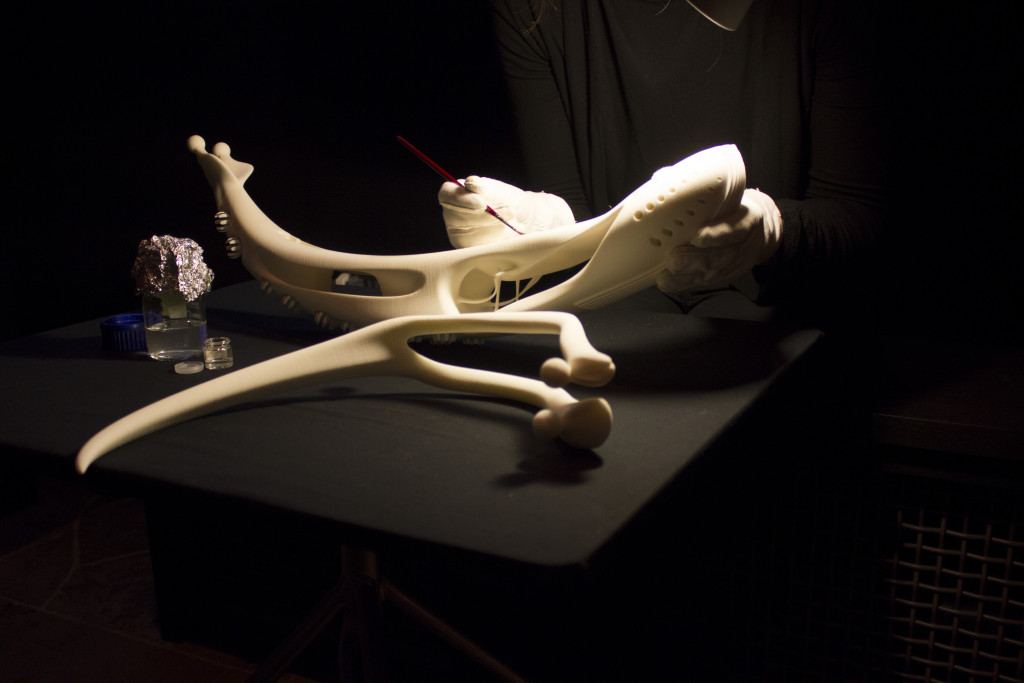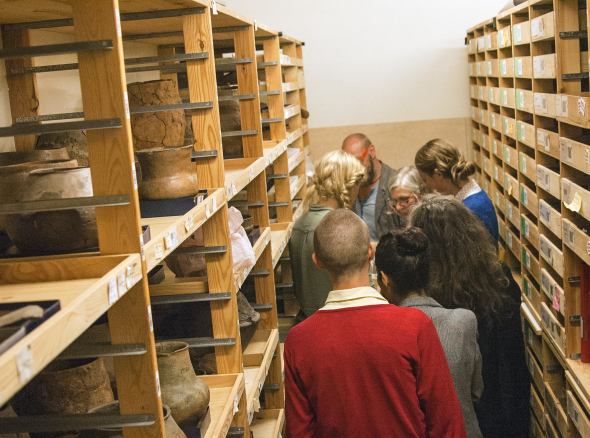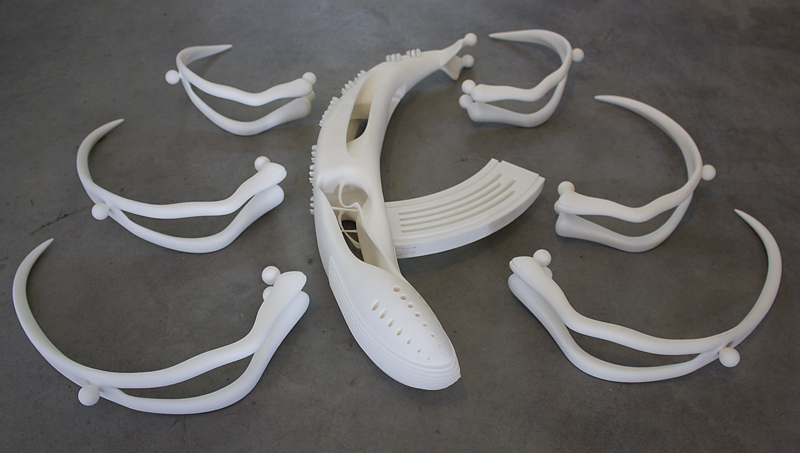
In autumn and winter of 2013–14 at the Swedish History Museum in Stockholm, Johannessen undertook research about identities and heritage in the museum’s collection. The title Contamination of Evidence offers a sneak peak into forensic work, and also brings up questions of evidence and truth. Contamination of Evidence – tainted evidence – is evidence that has reduced credibility because it has been somehow altered.
The Swedish History Museum creates a common view of history, but what stories are actually “true”? All the items in the museum can be seen as evidence, but whose stories do they tell and how are images from the past changing according to the present? Will artists “besmirch” the evidence, or was this contamination already there when the object became part of the collection?

Johannessen worked closely with archaeologist Kerstin Näversköld in examining the cataloguing procedure for every new object listed in the museum’s collection. Placing fragments of a fictional object – a 3-D printed sculpture with an unknown function – in the hands of the archaeologist was a method for challenging and understanding the significance of that which is still unknown to us. At the same time, questions are raised about the selection and gathering of objects, and about the museum and archaeologists’ goals and power.

In Contamination of Evidence the artist produced 3-D printed objects, which were investigated by the museum’s archaeologists who then described them based on their methods. This experience took place as an interaction between the audience, the museum archaeologists, and Johannessen. In this performance, the objects were signed by the archaeologists and then inserted into the collection. Johannessen’s fascination lay in highlighting the museum’s definition of power and the impact it has on our collective storytelling.
The project was developed in close dialogue with Curator Caroline Malmström and was a collaboration between the Art Lab Gnesta and the Swedish History Museum.